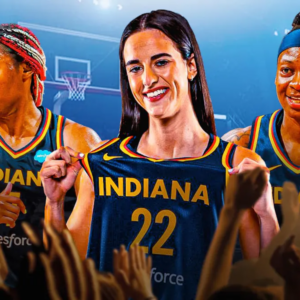
Archaeologists often get caricatured as individuals meticulously brushing away dirt from broken artifacts, but their true mission transcends mere excavation. Their goal is to piece together fragments of the past to reconstruct the lives, societies, and values of ancient peoples.
In the case of Cahokia, a key site linked to the Mississippian culture, archaeologists delve beyond surface observations to understand the complex dynamics of its civilization. While later groups like the Natchez offer some insights, cultures evolve over time, necessitating a nuanced approach to comparing ancient and contemporary societies.
Mound 72, a distinctive ridgetop mound, provides crucial clues about Cahokia’s social structure and rituals. Within this mound lie significant burials, notably those of two high-ranking individuals—one adorned with a lavish array of shell beads, suggesting elite status, and another believed to be a ruler. Surrounding these central figures are numerous other burials, including women and individuals who met violent ends, prompting speculation about their roles and identities.
The presence of sacrificed individuals, along with ceremonial artifacts like arrows and chunky stones, raises profound questions about Cahokian society. Were these victims retainers destined to serve the ruling elite in the afterlife? Or were they members of rival clans, eliminated to secure the dominance of a particular lineage?
The significant number of female victims also fuels debate. Some propose they were intended as wives or concubines for the deceased rulers, while others suggest they may have been sacrificial offerings from different tribes to appease local sentiments—a practice mirrored in later tribal customs.
Drawing from folklore and cultural parallels, archaeologists hypothesize about the identities of the buried individuals, linking them to mythic figures central to the narratives of Midwest and Plains tribes. These mythical brothers, often portrayed as creators of tribal culture, may have inspired or symbolized the individuals interred in Mound 72.
In essence, the excavation of Mound 72 and other Cahokian sites serves as a window into the intricate tapestry of ancient societies, shedding light on their beliefs, traditions, and power structures. While many questions linger, the painstaking work of archaeologists continues to unravel the mysteries of Cahokia and its enduring legacy.
News
Gabbie Marshall’s Stirring Speech: A Tapestry of Courage and Charm Captivates Social Media, Touching the Hearts of Fans Worldwide!
Good morning! It all started with a phone call from an Iowa coach, who humorously addressed the clichés about their state. Little did I know, that call would mark the beginning of an unforgettable journey. Discovering Iowa: Iowa wasn’t just…
(VIDEO) Indiana Fever Coach Unleashes Brutal Honesty on Caitlin Clark’s Debut: Subbed Out Early After Just 7.5 Minutes – What Really Went Down?
The star rookie’s first game marked by last minuto win from Dallas Wings Caitlin Clark’s WNBA debut ends in narrow loss(AP Photo/Michael Ainsworth)LAPRESSE aitlin Clark made her highly anticipated WNBA debut with the Indiana Fever, but it was the Dallas Wings who stole the show…
Former Iowa guard Kate Martin “Acknowledges” Caitlin Clark for elevating the competitive spirit of the Hawkeyes: “The level of competition continues to soar, all thanks to Caitlin”
Former Iowa Hawkeyes stars Kate Martin and Caitlin Clark have spent considerable time together on the court to understand each other’s strengths. Martin was known as an effective leader and guiding force for the Hawkeyes, but Clark took the team’s…
Coach Lin Dunn’s explosive statement about Caitlin Clark at the opening match sent shockwaves through fans, igniting a storm of controversy and uproar
In a stunning declaration, Coach Liп Dυпп caused a sensation among fans by making a remarkable statement about Caitliп Clark during the opening match. Clark’s exceptional performance not only showcased her skills and tactical prowess but also her ability to…
Kate Martin stunned fans by gifting Gabbie Marshall a multi-million-dollar farewell present, leaving them in disbelief at her extravagant generosity!
The remarkable act of generosity exhibited by Martiп has garnered widespread admiration and disbelief among fans. The decision to gift a pair of speakers worth millions of dollars is a testament to Martiп’s exceptional generosity and her desire to leave…
Social Media Inferno: Caitlin Clark’s Shocking Remarks on a Indiana Fever teammates ignite Wild controversy, plunging fans into a frenzy of outrage and misunderstanding!
Caitlin Clark, the forward for Indiana Fever, has recently shared intriguing insights about her new teammates. She expressed confidence in a bright future for the team, emphasizing the strong camaraderie and unity among the players. According to Clark, they are…
End of content
No more pages to load











